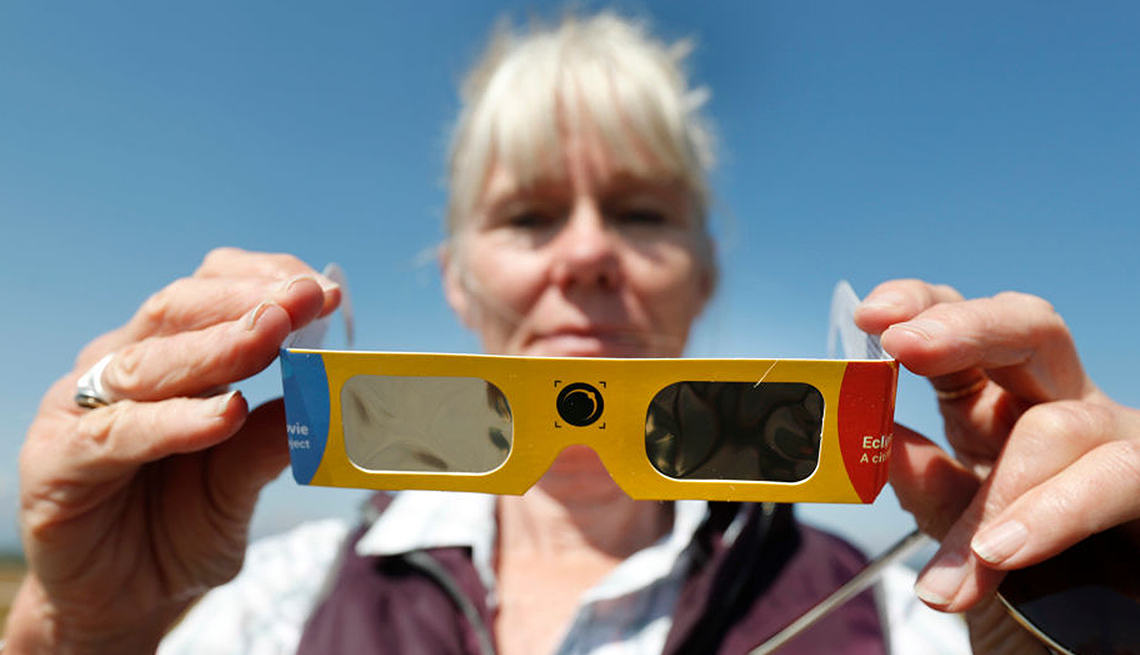AARP Hearing Center


Millions of people in North America will have a rare opportunity on April 8 to witness a total solar eclipse, which will pass over parts of the United States, Mexico and Canada. This phenomenon happens when the moon moves between Earth and the sun, completely blocking the face of the sun. As the moon’s shadow falls on Earth, the day will briefly darken into twilight.
An estimated 31 million people live in the “path of totality,” the narrow strip that will experience a total solar eclipse. NASA estimates 99 percent of people in the United States will be able to see a partial or total eclipse, depending on where they live.
Although this is an exciting astrological occurrence, it’s important to understand how to safely watch a solar eclipse without putting your vision at risk.
Can looking directly at a solar eclipse damage your eyes?
Yes. Staring directly at the sun without the right eye protection for even a short time can permanently damage your retina, the layer of tissue in the back of your eye that converts light to electrical signals for the brain. Usually, we naturally avoid looking directly at the sun because it bothers our eyes, but during a partial solar eclipse that natural aversion lessens because the sun is darkened.
Avoid the temptation to take a peek even during a partial eclipse, when the risk of retina damage remains high. The only time it’s safe to look directly at the sun, according to NASA, is during the brief phase of a total solar eclipse when the face of the sun is completely blocked by the moon.
How does damage to the eye happen?
We see by absorbing light that passes through the pupil to the retina in the back of the eye. Light-sensitive rods and cones in the retina signal to the brain what we are seeing. If we look directly at the sun, the powerful rays go through the eye to the retina. “The intense exposure triggers a series of complex chemical reactions that damage the light-sensitive rod and cone cells that help us see,” says Amita Vadada, M.D., an ophthalmologist with AdvantageCare Physicians in New York. “Burning the retina can lead to permanent central vision loss.”
Why is it dangerous?
During a partial solar eclipse, the sky becomes darker, as if it were dawn or dusk. Because the light of the sun is partially covered, the pupils dilate. When our pupils are open, more light can travel to the retina, causing even more damage. Because an eclipse is such a rare phenomenon, people are tempted to look, which is dangerous for the eyes. “I think when a solar eclipse happens, it’s so exciting, so people tend to just stare at it,” Vadada says.
How long does it take for eye damage to happen?
Looking at the sun directly, even during a partial eclipse, can cause permanent eye damage in less than a minute, according to Vadada, who is also a spokesperson for the American Academy of Ophthalmology.
































































More From AARP
Should You Get Your Eyes Dilated?
Doctors can spot hundreds of diseases in an examCould Correcting Your Vision Lower Your Alzheimer’s Risk?
New research reveals a link between vision loss and dementia
How to Treat 11 Top Vision Problems
Don't ignore these signs that your eyes are changingRecommended for You